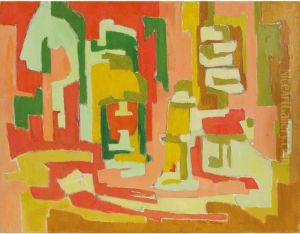Georg Lemm Paintings
Georg Lemm was a German visual artist known for his contributions to painting and graphic art. Born on February 7, 1897, in Berlin, Germany, he grew up during a period of significant artistic innovation and social change. As a young artist, Lemm was influenced by the movements of Expressionism and New Objectivity (Neue Sachlichkeit), which were prominent in Germany during the early 20th century.
During his artistic career, Lemm engaged with various mediums, including printmaking, drawing, and painting. His early work was characterized by a strong emphasis on line and form, reflecting the aesthetics of the German Expressionist movement. After World War I, like many of his contemporaries, Lemm's style evolved to reflect the more sober and realistic approach of New Objectivity, which sought to depict the social realities of the Weimar Republic with a sense of clarity and sometimes biting social critique.
In the 1930s, Lemm’s career was impacted by the rise of the Nazi regime, which condemned modernist movements such as Expressionism and labeled their works as 'degenerate art.' Like many artists of the time, Lemm faced significant challenges and constraints in practicing and exhibiting his art. Despite these difficulties, he continued to produce work, often addressing themes of human suffering, social inequality, and the human condition.
After World War II, Lemm's work, along with that of other Expressionist and New Objectivity artists, regained attention as part of Germany's cultural rebuilding process. His later works often reflected a synthesis of his earlier styles, combining the emotive qualities of Expressionism with the representational clarity of New Objectivity. Lemm continued to work and exhibit until his later years.
Georg Lemm passed away on January 11, 1974, in Berlin, having lived through two World Wars and the division of his home city. Today, his works are part of various collections and museums, and they continue to be studied as examples of the turbulent artistic landscape of 20th-century Germany. Lemm's legacy is that of an artist who navigated through the extremes of the century, reflecting the complexities of the human experience through his art.















